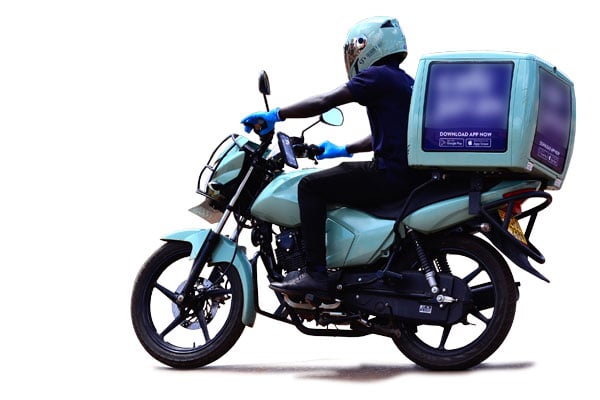How Covid-19 shaped our food industry

A food delivery motor bike. PHOTO | ABUBAKER LUBOWA
Worldwide the Covid-19 pandemic has had a devastating effect on the food industry that has crippled many establishments. Closer to home, the iconic Shanghai Restaurant formerly located along Sezibwa Road and situated in Kampala Club gave notice and closed shop.
Perhaps the most affected places were the hotels that historically were assured a regular and generous revenue from banqueting functions which inter allia included; weddings, conferences et al not to mention dining out. In one fell swoop these became victims of the pandemic. Coupled with these travails was the sharp drop in occupancy to such unfathomable figures as five or 10 per cent. Worse of all are the workers who have either been furloughed or laid off.
The reign of takeaway
A close examination of the dining scene in Kampala, shows that most of the informal eateries that serve local food are de facto takeaways so this edict comes as music to their ears. The other beneficiaries would be the likes of Kentucky Fried Chicken, Bon Appetite, Chicken Tonight, Pizza Hut to mention a few. However, the soft underbelly with these particular mentioned establishments is their general lack of menu diversity.
KFC specializes in fried chicken and burgers along with fries. Chicken Tonight has a similar menu although they also have a local component while Pizza Hut gives you pizzas so in terms of variety, the consumer really has a limited menu from which to choose.
As for the fully fledged restaurants such as Java House, Café Series, Il Patio, Caramel et al, it becomes a different cup of tea; they have the diversity but their Achilles heel is the lack of a Central Kitchen and this is where Café Javas beats them all head and shoulders.
This begs the question, will these establishments open up as takeaways and be sustainable?
Before one opens a restaurant, a lot of thought and planning has to be taken into account. Some of these aspects would be location, which is a determinant factor for the amount of rent one has to pay.
The type of food that one intends to serve, staffing, parking and a host of other items too numerous to dwell on here. Last but not least, is the seating capacity which in the case of traditional waiter service joints becomes a critical factor in determining the success or failure of the venture.
Re-think sitting capacity
To give you an illustration of the importance of the seating capacity, take a look at the following scenario: Assuming that the optimum available seating for a given restaurant is 80 covers and during the working hours they are able to turn over those covers five times which would mean 400 diners.
If the average cost per cover is Shs35’000, this would result in a gross income of Shs14m on a daily basis. Needless to say these figures are never cast in concrete but ceteris paribus they are the determining factor of revenue generation that an investor goes by before setting up shop and this is the case with all the high end establishments in town.
To be told that going forward diners will have to be kept two meters apart until further notice will come as a huge body blow to the hospitality industry. In one fell swoop one’s revenue will be halved and yet fixed costs such as rent, furniture, equipment will remain the same. Not to mention that if one burrowed capital for the project the amount and repayment schedule would not change. However, the variable costs such as manpower, food cost will decrease with utilities pretty much remaining constant, so what else could be done to mitigate the circumstances?
Increase prices
One way of dealing with the situation would be to double prices which no doubt would be suicidal since the elasticity for demand of food is not inelastic.
The other option is to create a very exclusive place and charge an arm and a leg with a view to garnering the original intended revenue.
Here I have in mind a place such as Noma that is a two star Michelin restaurant run by Chef Rene Redzepi in Copenhagen, Denmark and is ranked as the best restaurant in the world by Restaurant Magazine. A meal per person will set you back about $375 (Shs1.3m) for lunch or dinner without drinks. Seating capacity for Noma happens to be 40.
Before the Covid-19 scourge, reservations up to June were taken in March and up to April in February. Will such a model work in Uganda? It remains to be seen.
Nowadays with readily available apps for ordering food, this is where the future lies. Though I hasten to add that one would be well advised to invest in branded mopeds. I admit that institutional and contract catering are not easy to break into, but then again Rome was not built in a day.
The plan. . .
In the short run, I believe the best thing would be to reconfigure the kitchen and extend it into the dining area allowing for a small number of tables and brace yourself for the following:
1. Institutional catering
2. Contract catering
3.Takeaway orders
Short of that I see no ready or practical solution to the new order of business. Takeaway is the easiest one to take on and can be done with a minimum of rearranging the status quo.



